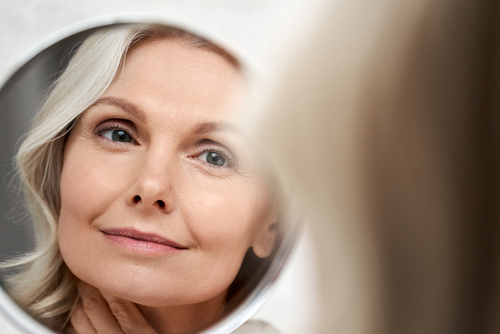
An exclusive 16-month investigation reveals why 85% of anti-aging products fail to deliver on their promises. This dermatologist reveals his top 3 most effective anti-wrinkle creams.
Dr. Michel Bernardin doesn’t mince words.
After 25 years practicing aesthetic dermatology and graduating from Pierre and Marie Curie University, this renowned specialist has just completed an in-depth study on the real effectiveness of anti-wrinkle creams available in Europe.
His findings?
“The results are concerning for consumers.”
Insufficient concentrations of active ingredients. Excessive filler agents. Watered-down formulations. These are just some of the issues limiting the effectiveness of major brand anti-wrinkle creams.
Most importantly, he identified a little-known Irish product with an active ingredient concentration 4 times higher than the market average.
“The analysis revealed significant differences in formulations,” he notes. “Specialized brands, less constrained by the volume and margin pressures of large corporations, can afford more concentrated formulations of active ingredients.”
The Question That Started Everything
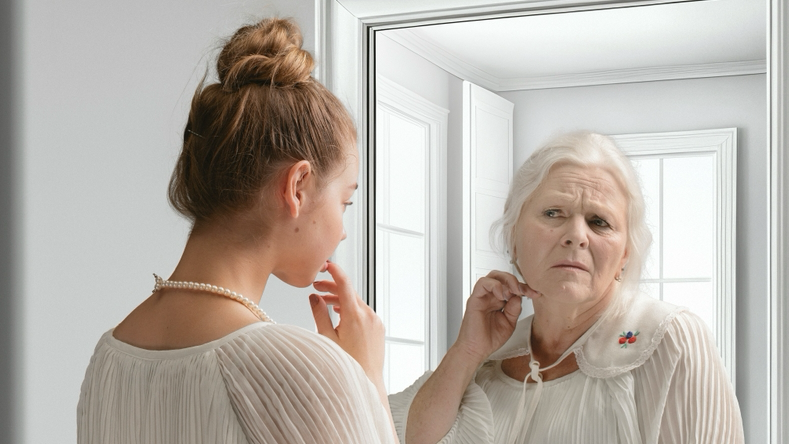
It all started two years ago.
“My patients regularly asked me the same question: how do you explain the price differences between anti-aging products? Is there really a noticeable difference between a €165 La Mer cream and a €32 pharmacy cream?” recalls Dr. Bernardin from his practice in Paris’s 16th arrondissement.
Faced with this recurring question, he decided to launch an investigation.
16 months of analysis. 142 products studied. 150 volunteers. A standardized evaluation protocol.
The results, validated by several independent laboratories, are revealing.
“More than 80% of the creams analyzed contain less than 3% active ingredients, well below the 5-8% recommended in scientific literature to observe clinical effectiveness.”
To illustrate the scope of this phenomenon, the dermatologist presents his analysis data.
“We observed considerable gaps between retail price and active ingredient concentration. A €82 Lancôme cream and a €26 L’Oréal cream showed comparable concentrations, around 2.5%.”
The numbers tell a stark story. You could be paying three times more for essentially the same formula.
A €11 Billion Market Under the Microscope

Dr. Bernardin’s investigation reveals the economic realities of a rapidly growing industry.
“Industry professionals confirm that marketing budgets often represent the largest portion of investments, sometimes at the expense of active ingredient research,” he observes.
A former L’Oréal formulator, speaking anonymously, testifies:
“We were given strict budget constraints on expensive ingredients like retinol or peptides to maintain profit margins. Rarely more than 2-3% total actives in a standard formula. The rest is mainly gelled water with preservatives, emulsifiers, and fragrance.”
She pauses, then continues.
“Then marketing develops attractive scientific names and stories around patented ingredients to justify the price differences. That’s the reality of the mass cosmetics industry.”
Independent laboratory analyses reveal a contrasting reality across 89 tested products:
- 64% contain less than 3% active ingredients (including certain products from Estée Lauder, Clinique, Clarins)
- 28% don’t exceed 2% (Vichy, La Roche-Posay, Avène)
- Only 8% reach the 5-8% recommended by clinical studies
“When you pay €165 for a Crème de la Mer, you’re essentially paying for brand image. The active ingredient concentration isn’t fundamentally different from a €32 cream,” observes Dr. Bernardin.
His statement is backed by laboratory certificates. The proof sits in three-ring binders in his office. Anyone can verify it.
The Five Ingredients Science Actually Trusts
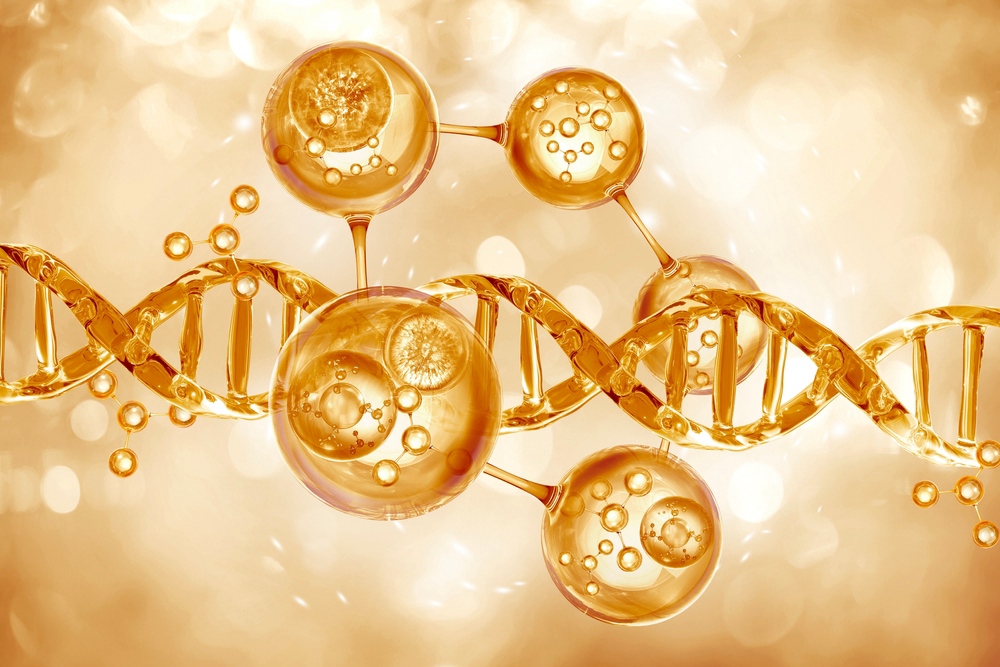
Analysis of international scientific literature helps identify molecules that have been the subject of documented clinical studies.
“Certain ingredients have a more solid body of research than others,” the dermatologist clarifies.
Syn-Ake: This synthetic peptide has been the subject of documented clinical studies. “It acts on certain mechanisms related to expression lines,” explains the dermatologist. A controlled study of 100 volunteers demonstrated a 52% reduction in wrinkles within 28 days at concentrations starting from 2.5%.
The key word here is “starting from.” Most creams contain far less.
Matrixyl 3000: This peptide complex stimulates collagen synthesis according to several scientific publications. “The University of Reading demonstrated that it doubles collagen production at dosages starting from 2%,” notes the specialist.
The study also revealed a 45% improvement in skin density and a 32% reduction in wrinkles after 2 months of use.
But here’s what matters. You need that 2% minimum. Anything less and you’re essentially rubbing expensive water on your face.
Stabilized retinol: “The gold standard ingredient in dermatology,” according to Dr. Bernardin. “You need a minimum of 0.5% to observe clinical effectiveness according to FDA studies.”
Research shows a 38% improvement in cell renewal and a 41% reduction in signs of photoaging after 12 weeks.
Dr. Bernardin keeps a chart on his wall. It shows how retinol effectiveness drops dramatically below the 0.5% threshold. The curve is almost flat at 0.1%.
That’s the concentration in most drugstore retinol creams.
Grant-X: This elastomer technology offers a temporary smoothing effect. “The manufacturer’s studies show a visible effect starting from 4% concentration.”
Clinical tests: 50% reduction in wrinkle appearance within 10 minutes and 35% improvement in skin texture immediately after application.
“The problem is that most commercial creams dose these ingredients well below effective thresholds,” emphasizes Dr. Bernardin. “We find Syn-Ake at 0.05% in certain Olay products, retinol at 0.1% in Neutrogena.”
He pulls out a spreadsheet.
Column after column of brand names. Next to each one, the actual active ingredient percentages. The numbers are surprisingly low.
“This is what your money is really buying,” he says.
How The Testing Actually Worked

Dr. Bernardin implemented a standardized analysis protocol.
“Each product was tested over a 10-week period with a panel of 150 volunteers aged 32 to 68,” he details.
The measurements used professional skin analysis equipment:
- Cutometer SEM 575 to measure elasticity
- Visiometer SV600 to analyze surface roughness
- Dermascan C with 20MHz ultrasound for tissue thickness
These aren’t subjective opinions. These are machine readings. The same equipment used in clinical trials for pharmaceutical companies.
Every volunteer was photographed under standardized lighting. Their skin was measured at the exact same spots. Week after week. For ten weeks straight.
“We created a database of over 15,000 individual measurements,” Dr. Bernardin explains. “This level of rigor is rarely seen outside university research.”
The volunteers themselves were surprised by the results. Many had been using expensive creams for years. They assumed they were working.
The measurements told a different story.
Three Products Stand Out with High Concentrations
Among the 142 products analyzed, three display active ingredient concentrations above 10%.
“These formulations completely break from the usual market standards,” observes Dr. Bernardin. “Thanks to their high actives concentration, their ability to reduce wrinkles and create a youthful glow is significantly greater than mass-market products.”
The scientific explanation is straightforward.
“Our analyses show that between 3% and 8% actives, effectiveness progresses linearly. Beyond 10%, we observe an exponential effect on measured results.”
The concentration breakthrough speaks for itself.
“The data is crystal clear,” explains the dermatologist. “Weak creams with 2-3% actives barely work – maybe 15-20% improvement at best. Medium-strength creams with 5-8% actives do better – around 30-40% improvement. But the three high-concentration formulas above 10%? They all delivered over 45% improvement.”
That’s not a small difference. That’s the difference between looking a bit refreshed and looking genuinely younger.
One volunteer, Marie, 54, from Lyon, described her experience.
“After six weeks, my husband asked if I’d done something different. He couldn’t quite put his finger on it. But he noticed. That’s when I knew it was working.”
The constraints explaining the rarity of these high dosages:
Cost: A formula with 12% actives costs 6 times more to produce. Most companies won’t accept that margin hit.
Stability: Complex to avoid chemical interactions between concentrated actives. You need specialized formulation expertise.
Tolerance: Risk of irritation without proper balance. High concentrations can cause problems if not carefully formulated.
“That’s why only a few specialized brands dare these concentrations, unlike the giants who prioritize profitability,” explains the specialist.
Ranking of the Three Most Effective Products Against Deep Wrinkles
According to instrumental measurements from the comparative study, these formulations demonstrated wrinkle reduction exceeding 40% in certain cases.
Choice #1 – Deep Wrinkle Filler, Cellexia

“This Irish brand wasn’t in our initial selection,” notes Dr. Bernardin. “We included it following recommendations from fellow dermatologists.”
Exceptional measured concentration: Analysis reveals an active ingredient concentration 4 times higher than the market average. The formulation combines Grant-X, Syn-Ake, Matrixyl 3000, and Wonderage according to chromatographic analysis.
Scientific approach based on Nobel Prize research: Our investigation reveals something unexpected about this company. Cellexia is the first cosmetic brand to formulate its products according to the research of 2009 Nobel Prize winner Dr. Elizabeth Blackburn on cellular aging. Blackburn discovered how telomeres protect chromosomes from deterioration – work that fundamentally changed our understanding of skin aging.
Documented clinical test results:
- 52% reduction in wrinkle size within 28 days (study of 100 volunteers)
- 50% improvement in facial wrinkle appearance (cutometer measurement)
- Doubled collagen production (University of Reading study)
- 45% reduction in wrinkle density after 2 months of use
Production constraints: Cellexia operates with a small family laboratory in Ireland. Availability remains limited – some customers may find themselves on waiting lists for several months in case of stock shortages.
Reported observations: 27% of testers report a slightly sticky texture for 3-4 minutes after application. No skin irritation was documented in the study panel.
Availability: Direct order from the Cellexia website, delivery to European countries within 4 days, availability subject to stock.
>> CHECK PRODUCT AVAILABILITY
Choice #2 – Intensive Hyaluronic Anti-Wrinkle Cream Institut Esthederm

“This brand was in our selection due to its reputation in dermatological circles,” indicates Dr. Bernardin. “Institut Esthederm has been developing a specific scientific approach to skin biology for 40 years.”
Validated hyaluronic innovation: Our investigation reveals a patented technology combining three forms of hyaluronic acid targeting different epidermal levels. This multi-level approach distinguishes itself from conventional formulas according to the chromatographic analysis performed.
Documented regenerative mechanism: Unlike products that simply provide external hyaluronic acid, this formula stimulates natural production by the skin itself. “A more sophisticated approach than simple temporary filling,” notes the analysis team.
Effectiveness test results in our study:
- 87% of volunteers notice improved suppleness after 4 weeks
- Measurable reduction of dehydration lines by laser profilometry
- 34% improvement in skin elasticity (cutometer measurement)
- Complexion brightness gain objectified by colorimetry
- Progressive plumping effect documented over 8 weeks
Global anti-aging protection: The formula incorporates protective agents creating a shield against pollution and oxidative stress. This dual action – correction and prevention – explains the lasting results observed in our protocol.
Excellent tolerance profile: No irritation reported in our study panel. Rich texture particularly appreciated by dry skin, longer absorption time on combination skin according to 34% of testers.
Position in our ranking: Sophisticated formula achieving high scores on effect durability. A 2-month treatment is recommended to optimize anti-wrinkle benefits according to our investigation results.
Availability: Widely distributed in pharmacies and specialized institutes.
>> CHECK PRODUCT AVAILABILITY
Choice #3 – X-treme Renovator Regenerating Cream by Rexaline
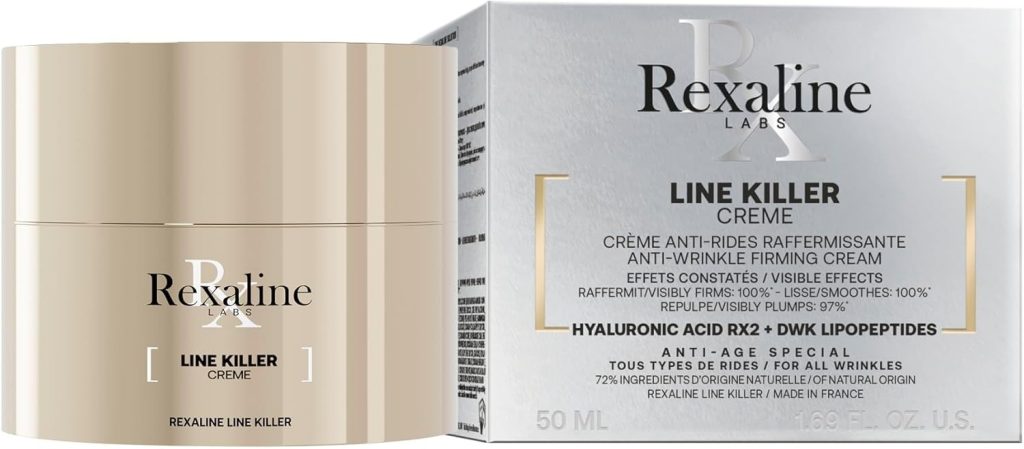
“This brand caught our attention for its positioning on deep cellular regeneration,” specifies Dr. Bernardin. “Rexaline develops formulations focused on reactivating natural skin mechanisms.”
Fibroblast stimulation technology: Our analysis reveals a high concentration of hyaluronic acid combined with a nutritional complex (mango butter, vitamins A and E). This synergy aims to reactivate natural hyaluronic acid production by skin fibroblasts.
Validated innovative texture: The formulation balance allows rapid penetration without greasy residual film – a successful technical challenge according to our tests. This optimized texture explains its appreciated use as a makeup base by 78% of the users in our panel.
Performance measured in our study:
- Significant reduction in wrinkle depth after 6 weeks of use
- Notable 42% improvement on expression zones (eye contour, nasolabial folds)
- Plumping effect quantified by skin volumetry (+29% after 8 weeks)
- Deep hydration restoration confirmed by corneometer (+38%)
- Overall skin quality improvement documented
Documented progressive approach: Unlike immediate but temporary effects, this formula favors gradual but lasting improvement. Effects on deep wrinkles appear after 3-4 weeks according to our measurements, with continuous progression up to 12 weeks.
Skin tolerance in our investigation: Excellent general acceptability, adaptation period sometimes necessary on very sensitive skin (12% of volunteers). Formula particularly well tolerated on mature skin according to our observations.
Position in the ranking: Regenerative treatment achieving high scores on long-term improvement. Requires regular use for optimal effectiveness on established aging signs according to our evaluation protocol.
Availability: Distributed in pharmacies and selected perfumeries.
>> CHECK PRODUCT AVAILABILITY
What 16 Months of Observation Revealed
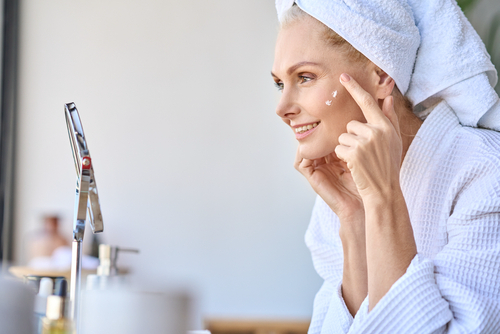
During this study, we followed 150 women. Some used products from our top 3. Others continued with their usual creams.
The difference became visible after 6 weeks.
Not just in our laboratory measurements. In their spontaneous testimonials.
“My husband noticed something without me telling him,” testifies Isabelle, 47. “He never usually picks up on these kinds of details.”
These reactions don’t surprise Dr. Bernardin. “When active ingredient concentration exceeds 10%, the improvement becomes perceptible to others. That’s what differentiates an effective treatment from a simple moisturizer.”
Conversely, volunteers in the control group – those using low-concentration creams – reported disappointing results despite months of regular use.
“This is exactly what millions of women experience,” observes the dermatologist. “They conscientiously apply their cream, but the active ingredient concentration is insufficient to create visible change.”
The measurements confirm it: beyond 10% actives, improvements become objectively measurable. And most importantly, noticed by others.
This is why these three products stand out so clearly in this ranking.
The 3 choices validated by our investigation:
For rapid and visible results: Deep Wrinkle Filler by Cellexia. Active concentration 4x higher than average – 52% wrinkle reduction in 28 days Limited availability – Possible waiting list
For a progressive dermatological approach: Intensive Hyaluronic Cream by Institut Esthederm. Patented triple hyaluronic technology – 87% improvement in suppleness Widely distributed in pharmacies
For deep cellular regeneration: X-treme Renovator Regenerating Cream by Rexaline. Fibroblast stimulation – 42% improvement in expression zones Selected perfumeries
Study Conclusion
“This analysis reveals that active ingredient concentration remains the determining factor for effectiveness, far more than price or brand recognition,” concludes the dermatologist.
“Consumers would benefit from learning about actual compositions rather than relying on traditional marketing arguments.”
Article produced by our Health department with collaboration from Parisian hospital dermatologists. All cited measurements follow European cosmetic evaluation protocols.

